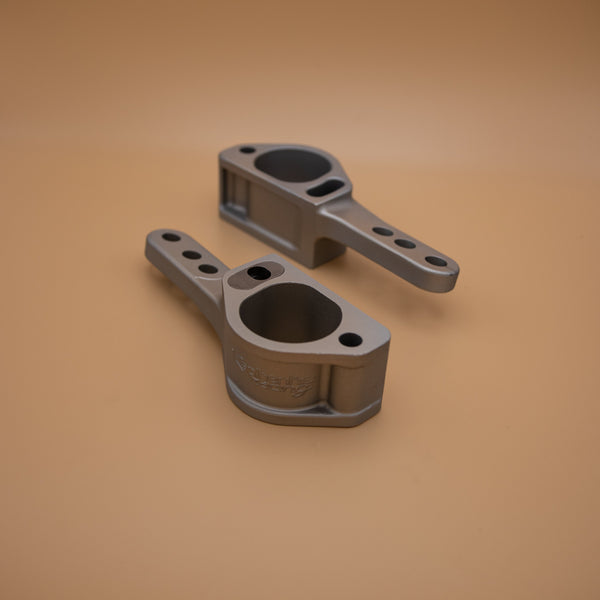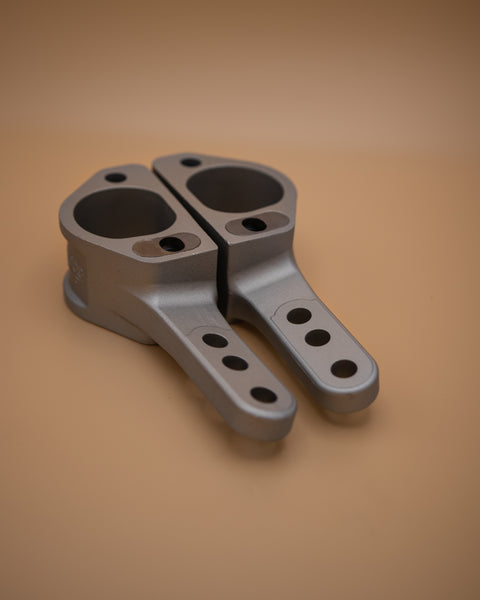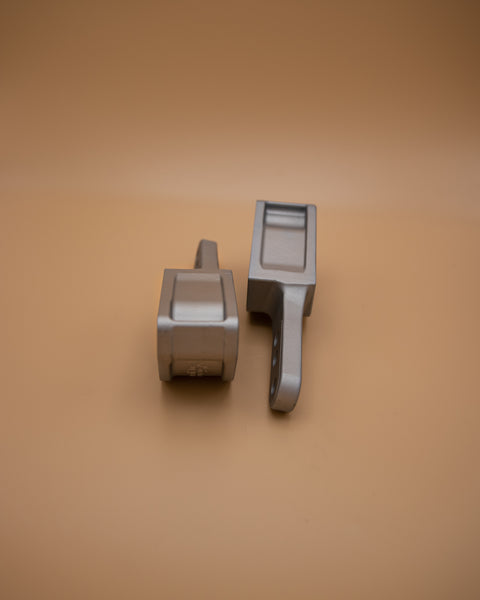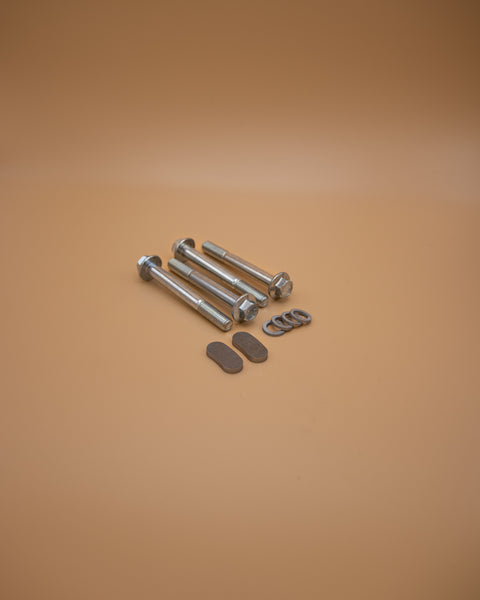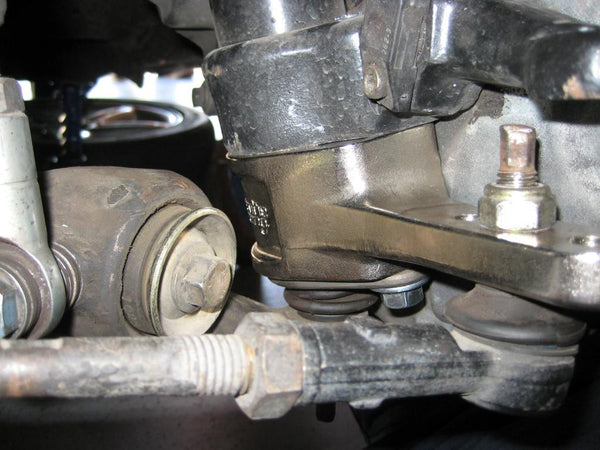700/900 Quick Steer Roll Correction
The remaining inventory we have in stock has a different color left to right. Any orders will receive 1 silver / 1 black unit.
Each order includes :
- 1 left and 1 right quick steer roll correction spacers
- Mounting hardware (bolts and NordLok washers)
- 1 set of factory Ackermann slugs (preinstalled) / 1 set of Ackermann blanks.
Stub Length Option:
- For people who only plan to use the quicker steer ratios we have a limited inventory of arms that only have the 2 faster positions and eliminate the stock ratio option. This reduces unsprung weight.
Key Features
- One piece cast 4140 Heat Treated Alloy Steel
- Includes all necessary hardware
- Utilizes factory ball joints and tie rods.
- Fixes suspension geometry issues caused by lowering without adding excessive single shear loads
- Adjustable Steering Ratio
- Adjustable Ackermann
- CAD engineered and FEA validated design
Information
Quick Steer Roll Correction's purpose is to correct the front suspension geometry issues that result from lowering the car. Suspension systems have an "imaginary" point called a roll center (RC), the roll center is the point at which the cars suspension system pivots around. The location and height of the roll center are very important to how the car handles and accelerates out of corners. The height of the center of gravity (CG) of a car and the height of the roll center have a relationship that can be described as a lever arm. The longer the lever arm the more force the chassis will be subjected to while cornering. When the front of a 700/900 or any car is lowered the roll center moves below the ground. This increases the distance between the CG and RC, in effect, it increases the lever arm length and therefore increases the amount of body roll the car is subjected to. The front suspension has a separate roll center from the rear suspension. The rear suspension in a solid axle car has a geometry where the roll center height changes very little when the car's ride height is lowered. This leaves the rear RC high and the front RC low. If one to draw a line between the two roll center heights you would see there is an angle. The angle can be described as the roll axis inclination angle. The steeper this angle the harder it is to put the power down on corner exit. There are many other things that roll center height dictates but adjusting the front RC will affect how the back of the car works as well.
The Quick Steer Roll Correctors are unique because they have an integrated steering arm, the typical/generic approach has a been a long bolt installed with a spacer off the steering arm and a separate spacer for the ball joint bracket. This is far from ideal because you are putting a large cantilevered single shear load on the bolt that supports the tie rod / rod end and this can lead to failure. The Quick Steer Roll Correctors have integrated steering arms that are compatible with the factory tie rod ends, this means no overloading in single shear. The new steering arm also presents an opportunity to modify the steering leverage ratio. The Quick Steer Roll Correctors have multiple steering leverage ratio options, The stock ratio is available, 20%, and 35% quicker ratio option. For comparison sake, the power steering has a 3.5 lock to lock ratio stock, 20% is 2.8 and 40% is 2.3.
These parts received extensive computer-aided testing and stress simulations to help remove any access weight and keep the part strong and stiff.
The Ackermann angle is a somewhat complicated concept for tuning but we left the option available to those who like to tinker or want to tweak things. As the part ships there is a "slug" or insert that locks out the adjustment, we also include a blank insert that can be drilled in any position you like. Extra blank inserts are also available.
These are beneficial if your car is lowered 1.25" or more from factory ride height.
NOTE: It is important to make sure that the lower ball joint stud clears your wheel and tire setup during installation. These products lower the ball joint in relation to the spindle center and therefore will reduce the clearance between the ball joint and the stud. The unthreaded shank of the ball joint stud can be cut off to increase this clearance.








